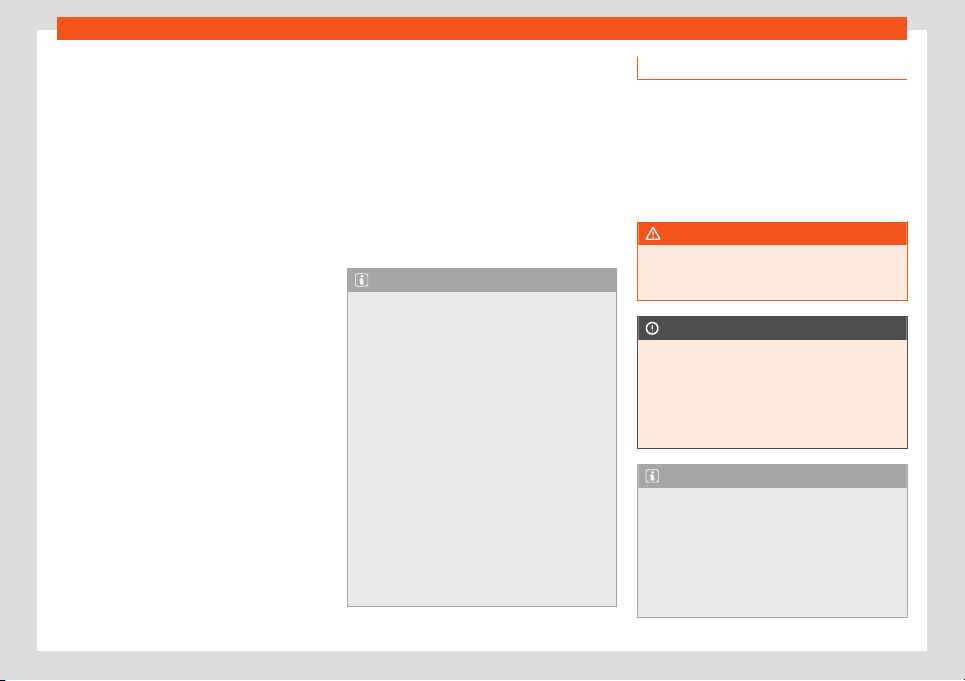Loading ...
Loading ...
Loading ...

Driving
in order to minimise fuel consumption and
emissions.
A col
d engine consumes a disproportionate
amount of fuel. The engine reaches its work-
ing temperature after about four kilometres
(2.5 miles), when fuel consumption will return
to a normal level.
Check tyre pressure
Always make sure the tyres are inflated to the
correct pressures
›››
page 355 to save fuel. If
the pressure is below half bar, fuel consump-
tion may increase by 5%. Due to the greater
rolling resistance, under-inflation also increa-
ses tyre wear and impairs handling.
Do not use winter tyres all year round as
they increase fuel consumption by up to 10%.
Avoid carrying unnecessary loads
Given that every kilo of extra weight will in-
crease the fuel consumption, it is advisable
make sure that no unnecessary loads are be-
ing transported.
Since the luggage rack increases the aero-
dynamic drag of the vehicle, you should re-
move it when not needed. At speeds of
100-120 km/h (62-75 mph), this will save 12%
of fuel.
Save electrical energy
The engine drives the alternator, thereby
generating electricity. This implies that any
increase in power consumption also increa-
ses fuel consumption! For this reason, switch
off any unneeded electrical devices. Devices
that use a lot of electricity include the blower
at a high setting, the rear window heating or
the seat heating.
Plug-in hybrid drive: brake early and evenly
to take advantage of energy recovery.
Note
●
If you hav
e the Start-Stop system, it is
recommended that it should not be discon-
nected.
●
It is recommended that you close the
windows when driving at more than
60 km/h (37 mph).
●
Do not drive with your foot resting on the
clutch pedal, as the pressure can make the
plate slip. This causes wear and can dam-
age the clutch plate.
●
Do not ride the clutch on a hill, use the
brake. The fuel consumption will be lower
and you will prevent the clutch plate from
being damaged.
●
Use the engine brake on downhills by
changing to the gear that is best suited for
the gradient. Fuel consumption will be
“zero” and the brakes will not suffer.
Driving on flooded roads
To prevent damage to the vehicle driving on
fl
ooded roads, take the following into ac-
count:
●
The water should never come above the
lower edge of the bodywork.
●
Drive at pedestrian speed.
WARNING
After driving through flooded zones, brak-
ing eff
ectiveness can decrease if the brake
discs or pads are damp
›››
page 274.
CAUTION
●
Driving thr
ough flooded areas may dam-
age vehicle components such as the en-
gine, transmission or electrical system.
●
Whenever driving through water, the
Start-Stop system must be switched off
›››
page 226.
Note
●
Check the depth of the w
ater before en-
tering the flooded zone.
●
Do not stop in the water, drive in reverse,
or stop the engine.
●
Vehicles travelling in the opposite direc-
tion cause waves that could exceed your
vehicle's critical height.
244
Loading ...
Loading ...
Loading ...